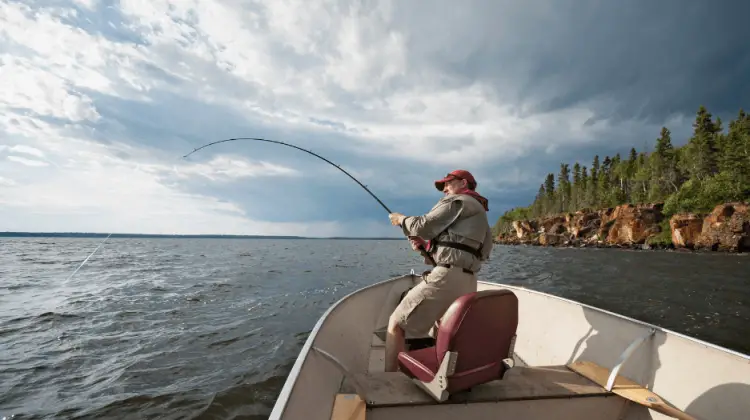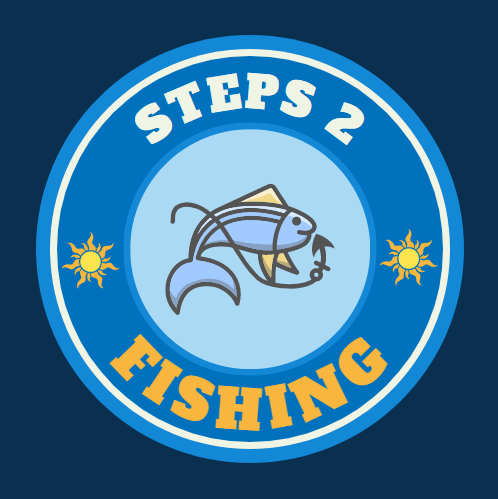
Fishing from a boat is an exhilarating experience that can lead to successful catches and great memories. However, it is important to prioritize safety and be well-prepared before setting out on the water. Boats offer the advantage of accessing remote fishing spots and navigating deeper waters but require additional considerations for a safe and enjoyable trip. This guide will discuss important safety guidelines and essential equipment for a successful fishing trip from a boat.
The Benefits of Using a Boat
Using a boat for fishing allows you to explore vast swathes of water and access areas unreachable from shore, often leading to more abundant and diverse catches. Certain species of fish not commonly found near the coastline can be targeted in deeper waters, increasing both the challenge and the reward. Selecting the Right Boat for the Water Conditions is crucial, as each type of vessel is designed to optimize the fishing experience in different environments.
For gentle streams, small rivers, and tranquil lakes, canoes, skiffs, and Jon boats are excellent for quiet approaches to elusive fish. Conversely, navigating larger expanses of water with potentially rough conditions calls for sturdier, more robust boats. V-hulls are known for their ability to cut through choppier waves, while “cathedral” hulls offer greater stability.
In addition, for the dedicated angler seeking big game fish in open water, specialty sportfishing boats equipped with advanced navigation and fish-finding technologies are a wise choice, ensuring safety and efficiency.

What Boat Do You Use for Fishing?
The type of boat you choose for fishing is a critical decision that can impact safety and effectiveness on the water. Fishing boats have specific features to enhance the angling experience, including rod holders, live wells, and sturdy hull designs.
When selecting a boat, consider the size and type of water you will navigate, the typical weather conditions, and the fish you target. Options range from small canoes and kayaks for calm, shallow waters to larger bass boats or cabin cruisers for deep-sea fishing. It is essential to pick a vessel that fits the fishing environment and has the necessary safety features and stability for the expected conditions.

Essential Safety Tips for Boat Fishing
Understanding Your Boat
Different boats serve different conditions. Familiarize yourself with the boat you’re using: a canoe, kayak, Jon boat, or a larger sport fishing vessel. Each requires distinct handling techniques, especially when facing various weather and water conditions. Understanding your boat’s capabilities and limitations can prevent accidents and ensure a safe return.

Checking the Weather
Weather is unpredictable and can change quickly on the water. Check weather conditions before embarking on your fishing trip and watch any changes while on the water. Avoid heading out in severe weather, high winds, or rough waters. If caught in bad weather, seek shelter and wait for conditions to improve.
Using Proper Anchoring Techniques
Anchoring your boat correctly is crucial for safety. It helps keep the boat steady in calm waters and prevents drifting in strong currents. Make sure you have a suitable anchor for your boat’s size and weight, and use proper anchoring techniques to avoid accidents or getting stranded.
Staying Alert and Aware
While fishing can relax, staying alert and aware of your surroundings is important. Watch for other boats, watercraft, and potential hazards such as rocks or debris in the water. Stay focused while handling sharp hooks and tools to avoid accidents.
Take a Boating Course
Consider taking a safety course if you’re new to boating or unfamiliar with the local waterways. Many organizations offer classes that cover navigation rules, emergency procedures, and conservation practices.
Stay Aware
Look for other boats, swimmers, and obstacles in the water. Stay aware of the boat’s stability; keep your weight balanced and avoid standing up or moving abruptly, especially in smaller boats.
Alcohol and Boating
Avoid alcohol consumption while operating the boat. It impairs your judgment and coordination, but operating a boat under the influence in many places is also illegal.
Wear Life Jackets
Ensure a properly fitting life jacket is available for each person on the boat, and wear it at all times. Children should have appropriately sized life jackets.

Anchor Kit
An anchor helps you stay in a specific location, particularly in windy conditions or when the current is strong. It can also be a safety feature in case of engine failure.
Emergency Preparedness
Equip your boat with safety gear, including a first aid kit, a horn or whistle, flares, and a fire extinguisher. It’s also wise to carry an emergency repair kit for unexpected leaks or engine troubles.
Techniques for Fishing from Boat
Boat fishing involves various techniques, each suited to different situations and species.
Trolling
Trolling is the act of dragging lures or hooks that are baited behind a boat in motion. This technique effectively catches predatory fish like tuna, marlin, and kingfish.
Drifting
Drifting involves letting the boat drift naturally with the current while your baited hook sinks to the bottom. This technique suits bottom-dwelling species like flounder, halibut, and catfish.

Jigging
Dropping weighted lures or bait vertically into the water and bouncing them off the bottom to attract fish.
Casting
Using spinning or baitcasting reels to cast lures or bait towards specific targets.
Anchoring
Anchoring involves dropping an anchor to keep your boat stationary in a promising fishing spot. This technique is perfect for fishing in specific areas where fish are known to congregate.

Essential Fishing Equipment for Boat Fishing
- Rods and Reels: Pick strong fishing rods and reels to handle larger catches. Avoid using a fly rod, as it may not be suitable for boat fishing.
- Tackle: Pack a variety of lures, hooks, sinkers, and baits to increase your chances of catching fish.
- A Net: Have a sturdy net to help land bigger catches safely.
- Tool Kit: Include pliers for removing hooks, a knife for cutting lines or preparing bait, and a multitool for repairs.
- Fish Finder: A fish finder can help locate schools of fish and improve your chances of a successful catch.
- Anchor System: This is important for keeping your boat in position while fishing, especially in areas with strong currents or wind.
- GPS Device: A GPS can be extremely helpful if you get lost or need to navigate to a specific location.
- Cooler: Bring a cooler with ice on board to keep your catch fresh.

Additional Safety Precautions
- Let someone know your fishing plan, including where and when you will be fishing and your estimated return time.
- Check your boat’s condition regularly and ensure all safety equipment works well.
- Be aware of your surroundings and watch out for other boats or hazards in the water.
- Follow all boating regulations and laws, including speed limits and navigation rules.
- Bring enough water and food for your entire trip.
- Avoid overloading the boat with too much gear or passengers.
Conclusion
It can be a thrilling experience to fish from a boat, but you should always prioritize safety and prepare well before heading out. Following these safety guidelines and having all the necessary equipment onboard will help you have a fun and successful fishing trip.
Always check weather and water conditions, wear a life jacket, and have a communication plan. You can relax and focus on reeling in the big catch with proper preparation! So gather your gear, pack your cooler, and head out for boat fishing fun.
FAQs
Q. Do I need a special license to fish from a boat?
A. Most places require a fishing license, regardless of whether you’re fishing from a boat or the shore. However, some places might require additional permits for boat fishing, especially in protected marine areas.
Q. What safety equipment should I have on my fishing boat?
A. At a minimum, you should have life jackets for all passengers, a first aid kit, a VHF radio, flares, a fire extinguisher, and an anchor.
Q. How can I locate fish from a boat?
A. There are several ways to locate fish from a boat. You can use a fish finder, look for signs of fish activity (like birds diving into the water), or rely on local knowledge and experience.
Q. What’s the best time to go boat fishing?
A. The best time to go boat fishing depends on your target species. Some fish are more active at dawn or dusk, while others might be more active during specific tides or seasons.
Q. How do I prepare for a boat fishing trip?
A. Check the weather, pack gear, and bring safety equipment.


Leave a Reply